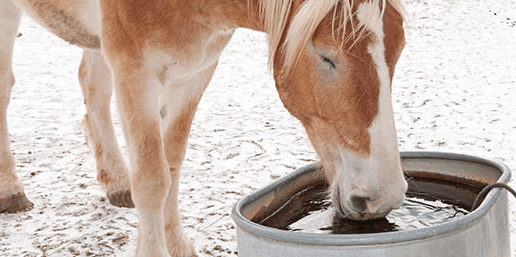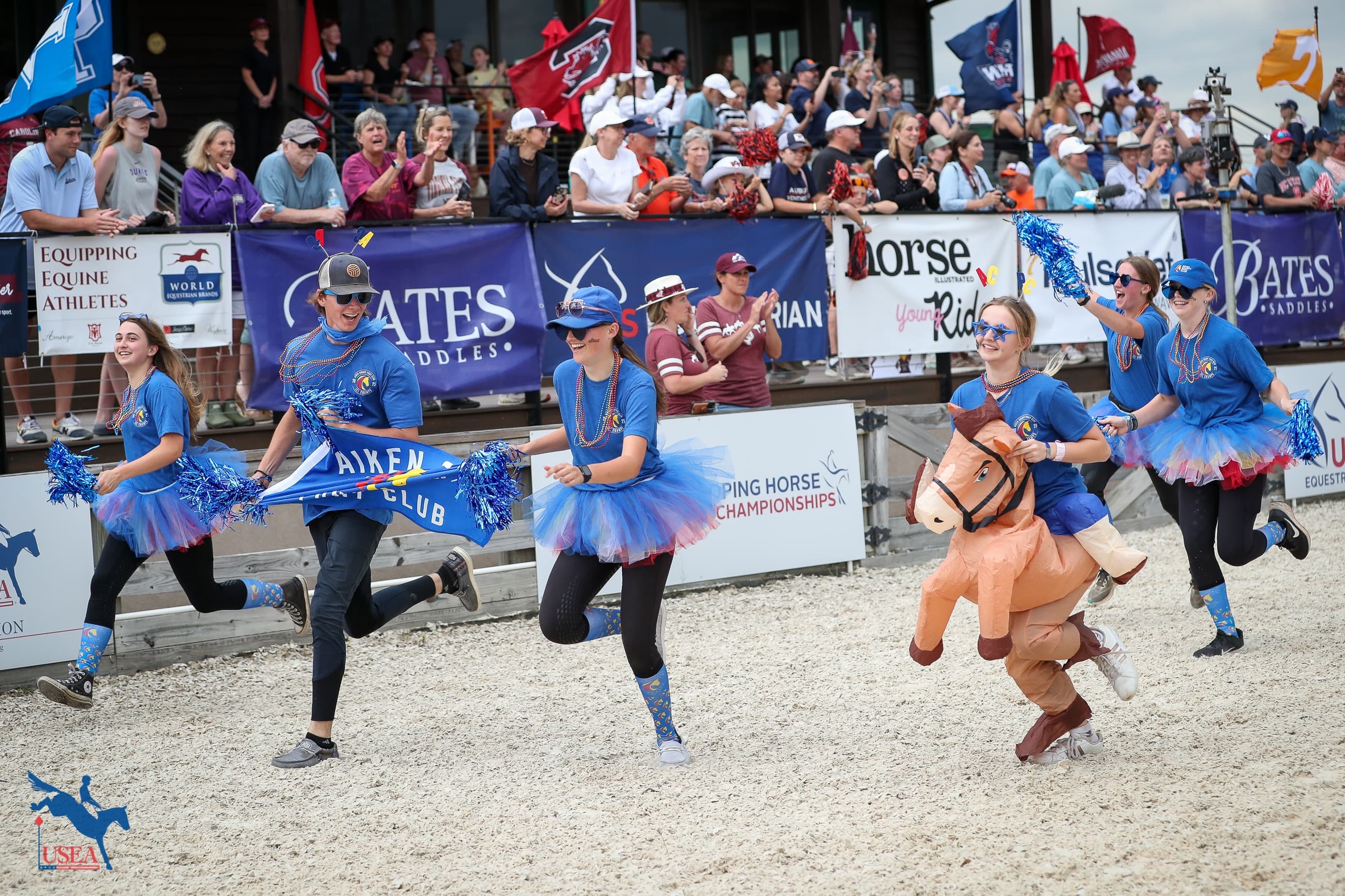Winter Tips for Taking Care of Your Horse

Imagine living in a field of grilled cheese sandwiches and milkshakes. That's literally what the summer months are like for your horse. It's easy to forget how much pasture grass can play a role in your horse's diet until the snow starts to fall. As winter sets in and the pasture grass starts to disappear, there's 3 key factors that will play a role in our horse's health: water, fiber, and essential nutrients.
Water
Often one of the biggest concerns of dehydration is impaction colic. This form of colic is mainly caused by your horse becoming dehydrated because it consumes less water. During the winter, horses consume less water because of cooler temperatures (no sweating), less water availability (frozen ponds, cold water, etc.) and a diet of hay (10% water content) instead of pasture (80% water content).
The first step is providing your horse enough water to drink. An adult horse (1000 pounds) in a cool, comfortable environment that is not working or lactating requires a minimum of 5 – 10 gallons of fresh clean water per day.
But here's the thing about horses: When it comes to water, their European roots start to show. Horses do not like ice in their water. During winter, many owners notice their horses becoming dehydrated, despite the fact that they've provided their four-legged friends all the H20 they can drink. When a horse drinks cold water, it causes their bodies to become colder. This means they have to expend additional calories to heat their bodies back up. Horses will naturally drink less water if it's too cold. Warming water using insulated or heated buckets will allow your horse to drink more. Research has shown that horses drink the most water when the water temperature is between 45 and 70º F.
Fiber
During the winter months, fiber plays an even larger role in a horse's diet. Fiber obtained from hay is necessary to keep the digestive system of your horse functioning properly which helps your horse keep warm during cold weather. Without enough fiber, horses literally become possessed beavers. They'll start gnawing the wood off anything from fence post to bedding in order to make up for their lack of fiber.
Horses should be eating at least 1.5% of their body weight in fiber per day. That means about 15 pounds for a normal, 1,000 pound horse. If the fiber is high quality, your horse can consume up to 3% of their body weight per day (30 pounds for 1,000 pound horse). That's why here at Standlee, we carefully manage every aspect of the growing and harvesting process to ensure our fiber is of the highest caliber.
Essential Nutrients
In order to stay happy and healthy, your horse also needs protein, trace minerals and vitamins. Pastures are often a great source of these essential nutrients for your horse, but during the winter, most pastures will disappear.
A common source of supplemental protein, vitamins and minerals comes from fortified grain concentrates. However, when choosing a product, it's crucial that you choose the feed that is intended for your type of horse. For example, if you have a pregnant mare, you should select a feed that is intended for pregnant mares, not "senior" horses. This is why each product page on the Standlee website lists the intended horse type for every one of our products.
The next critical factor in choosing a grain concentrate is making sure you are feeding the recommended amount. If you're feeding 1/3 of the amount recommended, your horse is getting exactly 1/3 of the intended nutrients. If you feel the amount of feed recommended is too much (i.e. your horse is gaining too much weight), you should feed your horse a more concentrated product. More concentrated products are called "supplement pellets" or "balancer pellets." They're designed to be fed at much lower rates but are still fortified to provide your horse with adequate nutrients.
If you're not 100% sure how much forage your horse requires, check out our improved feed calculator. We've carefully designed this free-to-use tool to take into account several key characteristics of your horse so you know how much feed you should be providing your four-legged friend.














